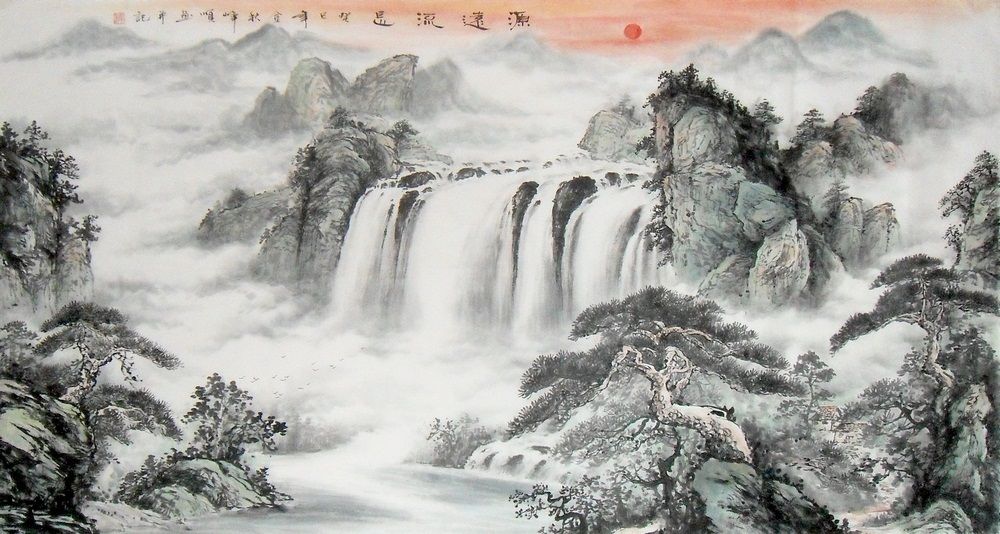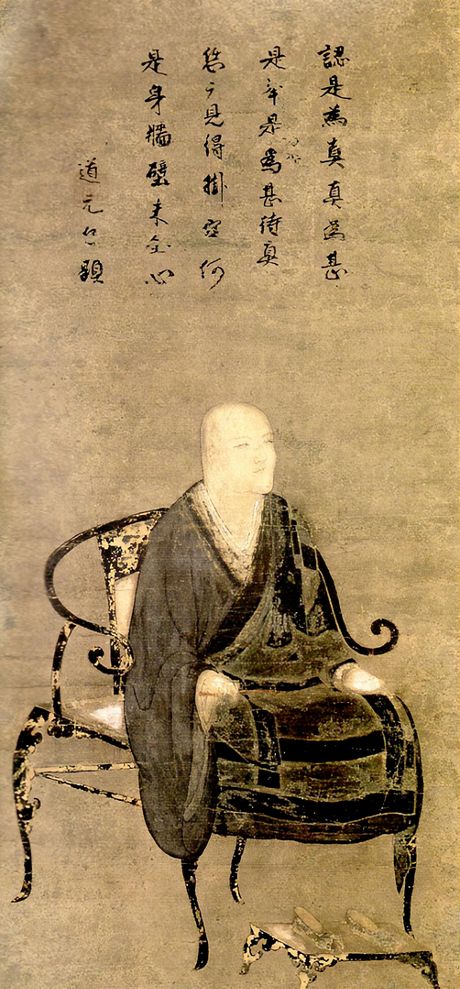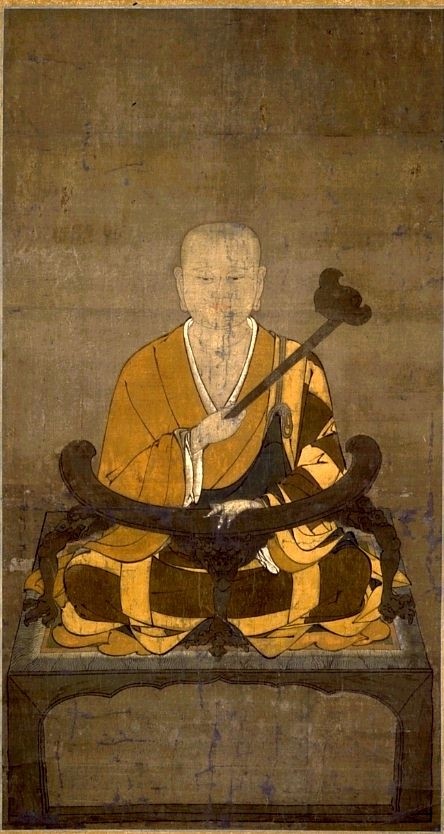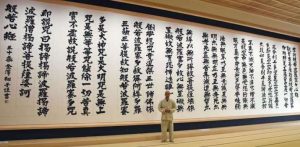
In my 30-plus years as a scholar of Japanese philosophy and a practitioner of Zen meditation, I have frequently encountered the question of why I dedicate my life to the study of Zen philosophy. In this essay, I would like to leave aside the considerations of whether ethnicity, country of origin, and assumed religious identity determine our field of study and of whether there is philosophy in the Zen Buddhist tradition.
It goes without saying that, as I have written at length, an academic Zen philosophy is possible and that ethnic and religious identities—whether real or imagined—do not preclude scholars from the study of specific traditions, as long as they possess a necessary amount of familiarity with and respect for the practitioners and practice of the tradition in question. A more interesting topic, however, is what texts written a thousand years ago in a specific soteriological context, and concerning monastic life and liberation from suffering and rebirth, can contribute to our contemporary discussions and concerns. This is what I would like to talk about today.
In the classical Zen/Chan canon, one can find quite a few three-liners that are confounding to the occasional reader. The most famous can be found in The Supplemental Records of the Transmission of the Lamp (Xu chuangdeng lu) and reads as follows:
Thirty years ago, when I had not yet started meditation, I saw that mountains were mountains, waters were waters. After I had begun meditating and gained some knowledge, I saw that mountains were not mountains, waters were not waters. But now as I achieved a place free of desire, I see that mountains are just mountains and waters are just waters.
(T 2077.51.614)
The Chinese character in the third line, translated here as “just,” “秖” (Ch. zhī), possesses obvious agricultural connotations since it indicates the process of ripening and is simplified as “只” (Ch. zhĭ), “only.” It is also used as a variant of “衹” (Ch. zhī) the traditional character for “only.”

This threefold structure [is – is-not – really/only-is] is quite common in the Chan/Thien/Sŏn/Zen Buddhist cannon. In some sense, these poems and sayings reverberate through the structure of the “three truths” (Ch. sandi) of “emptiness, provisionality, and the mean” (Ch. kongjiazhong) (T 1887B.45.764, T 1911.46.89) and reflect the famous dictum: “All things causally produced, I say are void, are but false names, and indicate the mean” (T 1824.42.5), that Zhiyi (538–97), Jizang (549–623), and Chengguan (738–839) developed to interpret Nāgārjuna’s (c. ~200) “philosophy of emptiness” (Skt: śūnyatāvāda).
The “three truths” articulate the aspect of negation, affirmation, and the non-duality of the former two. However, it reverses the order of affirmation and negation when compared with the above passage. Be that as it may, the “three truths” express the “middle way” between the “philosophy of emptiness,” highlighting the emptiness of all linguistic articulations, and a nominalism which denies that words and phrase refer to a real signifier (reality).
As my friend and colleague the sinologist Louis Komjathy pointed out at a recent meeting of the International Association of Japanese Philosophy, the famous line of The Supplemental Records of the Transmission of the Lamp indicates the linguistic deconstruction that Buddhist and Daoist self-cultivation practices facilitate. In meditation, practitioners come to realize that our conceptual constructions do not describe “things as they are” (Ch. rushi shixiang) properly or sufficiently. Only when we free ourselves from our conceptual presuppositions as well as from the impulse to categorize our experiences and, in turn, reify the concepts and category systems that we use, are we able to understand reality. By the same token, Thomas P. Kasulis interpreted Dōgen’s (1200–53) tongue-in-cheek advice in his instruction to zazen: “Sit ruggedly and think about non-thinking; how do you think about non-thinking; non-thinkingly” (DZZ 1: 89) to outline a “phenomenology of zazen” (Kasulis 1981, 65) by means of which the practitioner unlearns conceptual thought and intentional engagement.
This interpretation of the above saying as providing a roadmap of the process of deconstruction and deconceptualization through self-cultivation is a wonderful way of understanding three-liners in the Chan/Zen cannon. This reading of the above passage is well-rooted in the tradition and provides one reason for studying those texts as a philosopher. However, there is a second way of reading this text. The Japanese Zen thinkers D. T. Suzuki (1870–1966) and Masao Abe (1915–2005) interpret the stages articulated by the three lines of our original passage to indicate affirmation, negation, and “higher” or “absolute affirmation.” They inherit the phrase “absolute affirmation” (Jp. zettai kōtei) from their friend and teacher Kitarō Nishida (1870–1945), even though Nishida preferred the nomenclature “absolute negation” to describe the third stage.
Nishida illustrates these three stages by offering the analogy of a play:
In the great play of life we participate as both actors and spectators. If we were simply spectators facing the unfolding of the play, our standpoint would be purely intellectual and aesthetical. Again, if we were simply performers we would sink into our roles and there would be no place from which the unfolding of the play could be observed. But since we are both actors and spectators, we act and, at the same time, observe the unfolding of the play.
(NKZ 15:291)
On the first stage, where we “see that mountains are mountains,” we observe reality from an outside, distanced, and detached standpoint. Philosophers refer to this as the “third-person approach.” The stage when we “see that mountains are not mountains” describes the engaged standpoint of introspection. This is also called the “first-person approach.” Nishida suggests that, in real life, we are equally spectators and actors, we are engaged observers and aware as well as reflective participants.
But how are we to understand this third stage, which is described as the non-duality of affirmation and negation, of externality and internality, of objectivity and subjectivity? Masao Abe and D. T. Suzuki suggest that this stage is realized in the religious experience where all opposites are unified and transcended. This is obviously a possible interpretation of the third stage. However, it is quite esoteric and removed from daily experience. Kitarō Nishida and the French philosopher Maurice Merleau-Ponty (1908–61) have a more concrete suggestion of what this third stage could indicate when they identify the human body as the place where the distinction between externality and internality, affirmation and negation, is overcome.

From ordinaryzensangha.org
Dōgen, finally, introduces a third possibility of how to understand the place where the opposition of affirmation and negation, outside and inside, is overcome: interpersonal relationships. In his commentary on the above passage, Dōgen describes stage one as “people outside the mountains” (Jp. sangenin), stage two as “people inside the mountains” (Jp. sanchūnin), and stage three as the interpersonal relationship. In Dōgen’s words: “Decheng emerges when the person sees Decheng” and “the person emerges when Decheng encounters the person.” (DZZ 1:266) Simlarly, Kuoan Shiyuan’s (12th century) Ten Ox Pictures (Shiniutu) end with the encounter between a master and a disciple.* Be that as it may, Dōgen seems to suggest that The Supplemental Records of the Transmission of the Lamp offers a third way of engaging with the world and, by implication, an innovative method of scholarship and knowledge production: the “second-person approach.” The implication is that we are always in-relationship with others as well as the world and, subsequently, always, simultaneously, spectators and actors, outside and inside. Our lives take place at the intersection of affirmation and negation. This perspective opens up a host of exciting possibilities. And this, I believe, is one more reason to study Zen philosophy.
* See my earlier essay: Who am I – Self-discovery in Japanese Zen Practice (BDG)
References
Abe, Masao. 1985. Zen and Western Thought. Ed. William LaFleur. Honolulu: University of Hawaii Press.
Dōshū Ōkubo, ed. 1969–70. Dōgen zenji zenshū (Complete Works of Zen Master Dōgen). Two volumes. Ed. Tokyo: Chikuma Shobō. [Abbr. DZZ]
Kasulis, Thomas P. 1981. Zen Action – Zen Person. Honolulu: University of Hawaii Press.
Nishida Kitarō. 1988. Nishida kitarō zenshū (Complete Works of Kitarō Nishida). 20 volumes. Tokyo: Iwanami Shoten. [Abbr. NKZ]
Takakusu, Junjirō and Kaigyoku Watanabe, eds. 1961. Taishō shinshū daizōkyō (The Taishō Edition of the Buddhist Canon). Tokyo: Taishō Shinshū Daizōkyō Kankōkai. [Abbr. T]
Related features from BDG
Sino-Indian Narratives on the Transcendent: Chinese Philosophy Scholar Laura Lettere on the Buddhacarita
Book Review: Why Buddhism is True: The Science and Philosophy of Meditation and Enlightenment
Are You a Knowledge-Holder?
Modern Buddhism’s Cultural Translations: Two European Zen Monks
Who Am I — Self-discovery in Japanese Zen Practice
















Q: Impulse to categorize? Care to respond?